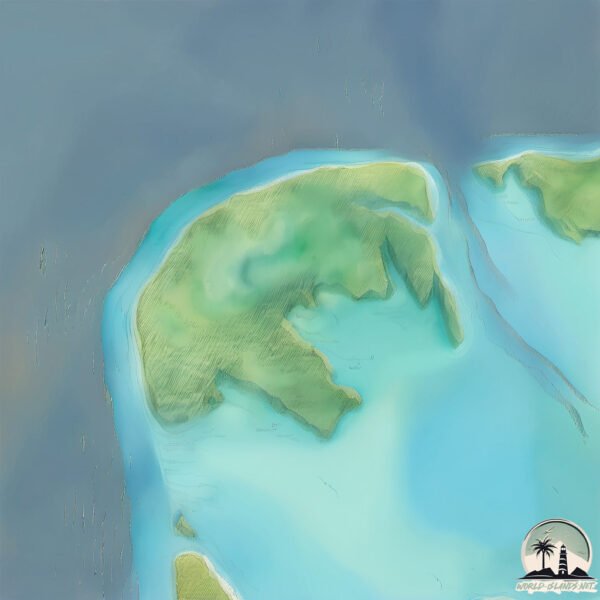Picard

Welcome to Picard, a Tropical island in the Indian Ocean, part of the majestic Indian Ocean. This guide offers a comprehensive overview of what makes Picard unique – from its geography and climate to its population, infrastructure, and beyond. Dive into the details:
- Geography and Size: Explore the island’s size and location.
- Climate and Weather: Weather patterns and temperature.
- Topography and Nature: Uncover the natural wonders of the island.
- Infrastructure and Travelling: Insights on reaching, staying, and making the most of your visit.
- News and Headlines: Latest News.
Geography and size of Picard
Size: 10.7 km²
Coastline: 19.8 km
Ocean: Indian Ocean
Sea: Indian Ocean
Continent: Seven seas (open ocean)
Picard is a Medium Island spanning 11 km² with a coastline of 20 km.
Archipel: Seychelles – An archipelago of 115 islands in the Indian Ocean, known for their stunning natural beauty, unique flora and fauna, and as a luxury travel destination.
Tectonic Plate: Woodlark – Situated in the eastern part of Papua New Guinea, the Woodlark Plate is a small tectonic plate primarily consisting of oceanic crust and undergoing active rifting, contributing to the complex geology of the region.
The geographic heart of the island is pinpointed at these coordinates:
Latitude: -9.38637436 / Longitude: 46.22241263
Climate and weather of Picard
Climate Zone: Tropical
Climate Details: Tropical Savanna, Wet
Temperature: Hot
Climate Characteristics: Defined by distinct wet and dry seasons with high temperatures year-round. Pronounced rainfall occurs during the wet season, while the dry season is marked by drought.
Topography and nature of Picard
Timezone: UTC+04:00
Timezone places: Asia/Dubai
Max. Elevation: 9 m
Mean Elevation: -13 m
Vegetation: Evergreen Broadleaf Forest
Tree Coverage: 65%
The mean elevation is -13 m. The highest elevation on the island reaches approximately 9 meters above sea level. The island is characterized by Plains: Flat, low-lying lands characterized by a maximum elevation of up to 200 meters. On islands, plains are typically coastal lowlands or central flat areas.
Dominating Vegetation: Evergreen Broadleaf Forest
Characterized by dense, lush canopies of broadleaf trees that retain their leaves year-round. These forests are typically found in tropical and subtropical regions and are known for their high biodiversity. Picard has a tree cover of 65 %.
Vegetation: 7 vegetation zones – Very Highly Diverse Island
Islands in this range are ecological powerhouses, showcasing a wide array of vegetation zones. Each zone, from lush rainforests to arid scrublands, coastal mangroves to mountainous regions, contributes to a complex and interdependent ecosystem. These islands are often hotspots of biodiversity, supporting numerous species and intricate ecological processes.
Infrastructure and Travelling to Picard
Does the island have a public airport? no.
There is no public and scheduled airport on Picard. The nearest airport is Ouani Airport, located 362 km away.
Does the island have a major port? no.
There are no major ports on Picard. The closest major port is MOUTSAMOUDU, approximately 365 km away.
The mean population of Picard is 4 per km². Picard is Gently Populated. The island belongs to Seychelles.
The name of the island resonates across different cultures and languages. Here is how it is known around the world: Arabic: ألدبرا; German: Aldabra; Spanish: Isla Aldabra; French: Aldabra; Portuguese: Ilha Aldabra; Russian: остров Альдабра; Chinese: 阿尔达不拉岛
Continuing your journey, Malabar is the next notable island, situated merely km away.
Life on Pitcairn Island - home of the descendants of the mutineers from HMS Bounty



Seychelles is classified as Developing region: Regions characterized by lower income levels, with economies in the process of industrialization and modernization. The level of income is Upper middle income.
News – Latest Updates and Headlines from Picard
Stay informed with the most recent news and important headlines from Picard. Here’s a roundup of the latest developments.
Please note: The data used here has been primarily extracted from satellite readings. Deviations from exact values may occur, particularly regarding the height of elevations and population density. Land area and coastline measurements refer to average values at mean high tide.
